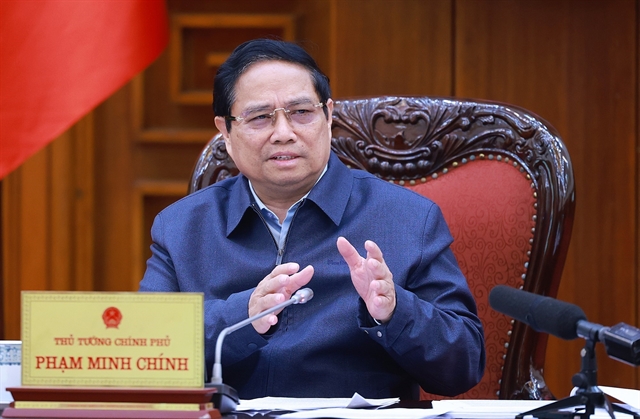<i id='F4270575E5'><strike id='F4270575E5'><tt id='F4270575E5'><var dropzone="f33871"></var><area date-time="d8b1eb"></area><map dir="d38a53"></map><pre date-time="42e1ef" id='F4270575E5'></pre></tt></strike></i>  |
| Prime Minister Phạm Minh Chính gives instruction at the conference. — VNA/VNS Photo Dương Giang |
HÀ NỘI — Prime Minister Phạm Minh Chính on Sunday called for a continuation of reviewing and adjusting in the rearrangement of the apparatus to ensure it is streamlined, compact, strong, operates efficiently and effectively, improves the quality of public employees.
Giving instructions at the conference on reviewing the implementation of the 12th Central Committee’s Resolution No 18-NQ/TW on innovating and reorganising the political system, the PM emphasised that the apparatus re-arrangement must reduce intermediaries, but must not overlap or omit functions, tasks and powers.
He acknowledged the spirit and high responsibility of the Steering Committee members, especially the Ministry of Home Affairs – the Government Steering Committee Standing Agency.
Regarding the merging of a number of ministries, ministerial-level agencies and Government agencies, the PM requested that they continue studying and submitting suitable plans.
In parallel with the structure and personnel re-arrangement, it is necessary to review and address existing problems within these units.
For ministries, ministerial-level agencies and Government agencies with "clear, proven correct, and agreed upon by the majority" arrangement plans, they should complete dossiers to submit to the competent authority for decision.
PM Chính directed the consideration of transferring some committees to be managed by ministries and implementation of policies for public employees during the process of restructuring the apparatus.
Especially, organisations must have policies to encourage officials to go to the grassroots.
Believing that reorganising the apparatus is difficult, the PM requested the Steering Committee members to promote a sense of responsibility and focus on implementation to ensure progress and quality according to the set requirements.
During the conference, the Steering Committee focused on reviewing its work, discussing tasks of the Government Party Committee and the establishment of the Government Party Committee directly under the Central Party Committee.
They also reviewed the internal criteria for arrangement of ministries, ministerial-level agencies, and agencies under the Government; and the policies for workers in the apparatus re-arrangement.
The representatives discussed the development of decrees regulating functions, tasks, powers and organisational structures of ministries, ministerial-level agencies and Government agencies.
Particularly, ministries, ministerial-level agencies, and Government agencies that will be merged will soon complete these decrees after receiving comments from the Central Steering Committee.
According to the Steering Committee, reorganising the political system's apparatus has been urgently carried out by ministries and agencies, and the work has basically been finished.
Accordingly, it is expected that the Government's apparatus will be streamlined from 30 to 21 focal points, including 13 ministries, four ministerial-level agencies, and four Government-attached agencies.
Ministries and agencies also reorganise their internal apparatus; linking the reorganisation with streamlining their staff and improving staff quality.
It is expected to reduce 12 out of 13 general departments and equivalents; 500 departments and equivalents under ministries and general departments; 177 departments under ministries and agencies; and 190 public service units.
Ministries and agencies have submitted and solicited comments on the draft decrees regulating their functions, tasks, powers, and organisational structure.
Besides, 63 provinces and cities have also arranged their apparatus in line with the Government's arrangement. — VNS
顶: 3829踩: 8143
评论专区